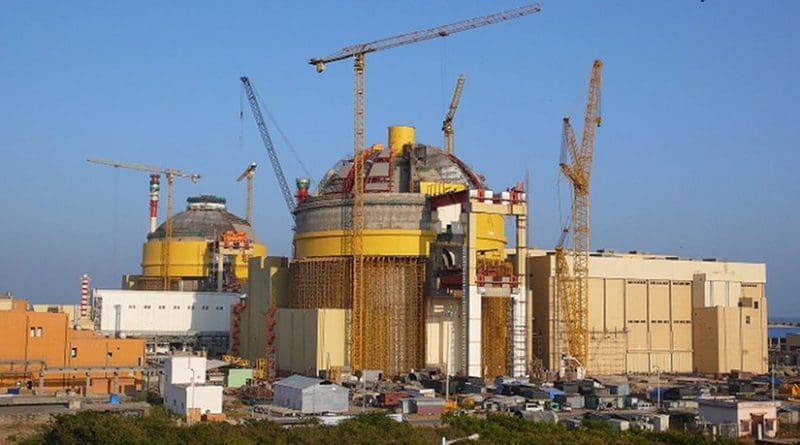Comparing The French And Indian Nuclear Doctrines – Analysis
By IPCS
By Marie Pavageau*
Generally speaking, countries’ decisions to go nuclear are based on traumatic episodes that shaped their national identity and must never happen again. The 1956 Suez Crisis was the trigger for France’s nuclear programme when it realised it was vulnerable to Soviet nuclear threats and a reluctant US. India’s experience was shaped by the 1971 Bangladesh war when both China and the US ganged up and resorted to nuclear threats against India. Curiously, both India and France have a similar notion of international affairs – that of strategic autonomy where they refuse to depend on bigger powers for their security or projection of interests.
The trigger for the nuclearisation of both countries was based on both abandonment and heightened threat intrinsically linked with their doctrines of strategic autonomy. It is for this reason the similarities and contrasts in their nuclear doctrines are important to study.
Four key similar elements can be identified in the two doctrines: both countries have a “minimal deterrence” doctrine. In France’s case, this has resulted in a massive reduction in the size of the arsenal from its peak a few decades back. In India’s case, the growth has been at a snail’s pace and estimates by experts show that the actual weapons arsenal will remain small relative to other nuclear states. Second, they both threaten their adversaries of unacceptable damages in an event their national interests are threatened, albeit the quantum of such damage remains undefined. Third, both countries view their anti-missile defence systems as complementary to their deterrents by reducing vulnerability (however minimal) to a first strike. Finally, both countries avoid mentioning the target of their respective deterrents. For France, this is something new as Russia was frequently mentioned as the target during the Cold War. India, though, has maintained a policy of not naming its intended target except once, immediately after the 1998 nuclear tests, when the letter from then Indian Prime Minister Atal Behari Vajpayee to the then US President Bill Clinton expressly mentioned China as the intended target.
The differences in the nuclear composition and doctrine though are many. Both India and France exercise absolute civilian control over their nuclear weapons, but with a major contrast in their command process. France’s control is autarkic with the French president exercising absolute and sole authority over weapons launch. India’s exercise authority is collective through the executive council and the launch order has to go through the executive, i.e. the National Security Adviser.
It can also be argued that French strategic autonomy known as auto-suffisance is also more “autonomous” than India’s in that it is able to ensure its independence from any external pressure. 99 per cent of the French deterrent – apart from its uranium imports – are “made in France” (for example its missile technology, Rafale jet-fighters, SNLE submarines). India’s deterrent still relies on foreign technologies. For example Russia is sought out for its nuclear propulsion technologies. Similarly India is on a never ending quest for air land and sea propulsion as well as seeking technology transfers on almost every aspect of modern weaponry. It can be also be argued that India’s “missile revolution” coincides far too conveniently with the lifting of dual-use technology sanctions on India and finally its desire to import reprocessing technology means that even the material actually available for the nuclear device is prone to external interference.
The divergences continue in the arena of No First Use (NFU). France has an explicit first use policy while India is seen as moving from an NFU to a first use policy. The upgrading of the deterrent horizontally (in terms of quantity) and vertically (in term of quality) suggest a possible future change in their nuclear doctrine towards a “preventive strike.” This has been presaged both in the 2003 doctrine “in the event of a major attack against India, or Indian forces anywhere, by biological or chemical weapons, India will retain the option of retaliating with nuclear weapons.”
But perhaps the greatest area of divergence comes in the form of leadership credibility, or the countries’ perceived will to use its weapons to defend itself. While both arsenals remain opaque, France engages in a publicity exercise with each new president publicly stating an evolution of its nuclear posture. Its officials then widely circulate this posture, solicit opinions and views and clarify each iteration to other countries. India on the other hand is yet to review and revise its 2003 doctrine despite a vastly changed international environment and refuses to clarify or discuss the same. More importantly, French leaders do not shy away from stating their will to use the deterrent, while Indian prime ministers tend to downplay their resolve either by use or omission of words.
Overall, the difference in the two deterrents, their composition and thought reflects the two countries’ requirements well. However, the seeming lack of leadership credibility – either in the public willingness to use, lack of autarky, and lack of revision of the Indian deterrent and doctrine – seriously erode the doctrine’s credibility.
*Marie Pavageau, Research Intern, IPCS Nuclear Security Programme

